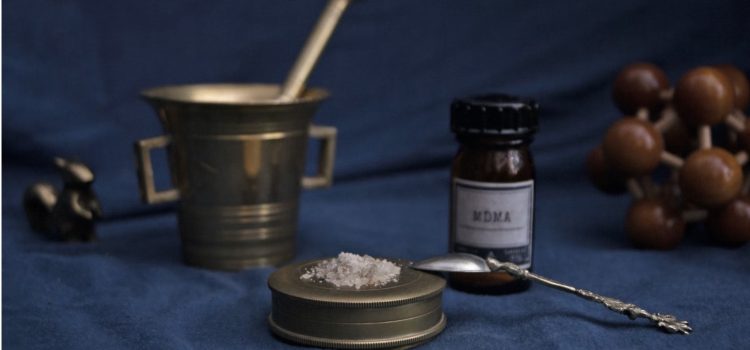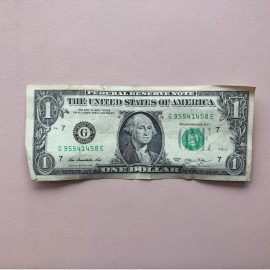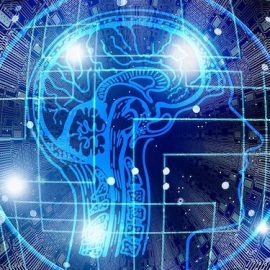
This is a free excerpt from one of Shortform’s Articles. We give you all the important information you need to know about current events and more.
Don't miss out on the whole story. Sign up for a free trial here .
What are psychedelic drugs? Why are they becoming a popular treatment? What are the downsides?
The main benefit of psychedelics is their potential for significant therapeutic benefits, including their ability to revolutionize psychiatry, a field that’s been floundering for decades. However, people arguing against psychedelic drugs say that we still don’t fully understand the risks.
Keep reading to learn what psychedelic drugs are, including the benefits and drawbacks of using them.
Psychedelics Hit the Mainstream
The last few years have seen a surge of interest in psychedelic drugs, particularly as their value in treating intractable mental health conditions becomes clearer. Psychedelics have even come to Netflix and Wall Street. As our enthusiasm for psychedelics blossoms, they’re being proposed as cures for anything from anxiety and depression to food allergies and periodontal disease. Because of these potential benefits, more and more people are curious about what psychedelic drugs are and others are pushing for legalization around the world. However, legislators are currently cautious. Is this caution just outdated thinking from the U.S. War on Drugs, or are legislators right to take things slow?
In this article, we’ll explain the background on psychedelic drugs: what they are, which are currently being used or investigated for therapeutic use, and how far down the road we are to legalization.
What Are Psychedelic Drugs?
So, what are psychedelic drugs? The word “psychedelic” was invented in 1956 by psychiatrist Humphrey Osmond, who combined the Greek words psyche (“mind” or “soul”) and delein (“to manifest”) to create a word meaning “mind manifesting.” (An alternate term, “entheogen,” refers to the mystical experiences these substances sometimes provoke. Yet another alternative, “hallucinogen,” is popular but falling out of favor because it’s seen as inaccurately capturing the experience).
The most common psychedelic drugs are as follows:
- Psilocybin and psilocin, which are the active compounds in “magic” mushrooms. Psilocybin mushrooms are found all over the world and have a long history of traditional use.
- Ecstasy or MDMA (3,4-methylenedioxymethamphetamine), which was originally synthesized in 1912 by Merck as part of a medication to stop bleeding. Merck didn’t test it at the time, so it wasn’t until the 1970s that MDMA became popular.
- LSD (lysergic acid diethylamide), which was first made in the lab in 1938 from ergot, a fungus that grows on rye. Swiss chemist Albert Hofmann, who synthesized it, only discovered it was psychoactive after accidentally touching it and absorbing some through his fingertips in 1943 (and taking a now-famous trip home on his bicycle).
- Mescaline, which is found in cacti such as peyote, San Pedro, and Peruvian Torch. These plants are all native to the Americas and are commonly used in indigenous rituals.
- DMT (N,N-dimethyltryptamine) is found in tiny amounts in many plants and animals. Some researchers speculate that DMT is released when we die. DMT can be taken on its own or as one of the active ingredients in ayahuasca, a traditional ceremonial drink in many cultures of the Amazon basin.
- Ketamine is a legally available anesthetic that’s often used in human and veterinary surgery. It was first synthesized in 1962.
Legalization: The Current State of Play
Of the psychedelic drugs on the above list, ketamine is the only one that’s widely legal (though only for controlled use in medical settings). Psilocybin mushrooms are currently legal in Brazil and Jamaica, and decriminalized (officially illegal but with the law unenforced) to differing degrees in several other countries.
In the U.S., psilocybin is already legal for therapeutic use in Oregon and has been decriminalized in a number of cities and states (including Denver, Oakland, San Francisco, and Washington, D.C.), and there’s legislation on the table in more. LSD and DMT are currently the farthest from legalization, but if current trends continue they’re likely to be next.
Indigenous and religious communities may be granted special permission to use traditional psychedelic drugs (for example, psilocybin mushroom use by the Mazatec community in Mexico and peyote in the activities of the Native American Church in the U.S.). Other countries, such as Colombia, have no specific legislation regarding them.
In the U.S., the 1950s and 1960s saw widespread recreational use of LSD and a concurrent boom in therapeutic research. However, this was curtailed (or at least went underground) in the early 1970s by the War on Drugs. It’s only been in the last decade that research has re-emerged and then quickly gathered momentum following FDA “Breakthrough Therapy” status designation for psilocybin and MDMA.
Where Do We Go From Here?
It’s clear that psychedelic drugs have genuine, profound benefits, and it’s easy to get swept up by the prevailing currents of optimism. But it’s also clear that if we’re going to proceed with psychedelics for therapeutic purposes, we need to come to terms with their shadow side.
We Can Learn From Indigenous Communities
We can observe some similarities in the rituals of different indigenous communities that have been working with psychedelics for hundreds of years. First, their use is strictly ceremonial—it’s set off from everyday life and limited to activities with religious or healing purposes. Second, these ceremonial contexts are also highly structured, so participants know what to expect. Third, ceremonies are supervised by experts who’ve used the substance many times and are therefore able to provide guidance. To mitigate the risks of unpredictable and dangerous behavior and potential abuse, we might consider following these same principles in our use of psychedelics in therapy.
However, there’s a danger of romanticizing indigenous communities and their experts. Indigenous women in the Amazon, for example, are clear-eyed about the possibility of abuse and refuse to drink ayahuasca with shamans they don’t know. There also may be a tendency to romanticize the substances themselves: Psychedelics aren’t all euphoria, healing, joy and light; instead the experiences users have reflect the content of their subconscious minds. The Aztecs, for example, incorporated psilocybin mushrooms and LSD-like morning glory seeds into their human sacrifice rituals.
Psychedelic Drugs Aren’t a Magic Pill
In our pill-popping culture, there’s a temptation to want to take a pill and be done with it. Psychedelic drugs simply can’t be reconciled with this attitude. They’re powerful drugs—they can prompt incredibly intense experiences and force you to confront trauma you may have been running from your whole life—but they’re not magic pills. They open the psyche temporarily (this has also been described as “rebooting” or “spring-cleaning”), but the patient has to go in and do the hard, often confronting work.
The Way Forward
An increasing number of people have enthusiastically begun working with psychedelic drugs only to pull back when the unintended consequences of their work became clear.
Albert Hofmann, the Swiss chemist who discovered LSD, initially believed that the drug would only be of interest to artists and psychotherapists. He was first disappointed and then alarmed when the general public embraced it as a party drug. Referring to LSD as his “problem child,” he later recounted the peaking enthusiasm and then the reports of accidents, psychosis, and crime that followed before it was banned in the late 1960s.
More recently, clinical psychologist Dr Rosalind Watts gave an optimistic TED talk in 2017 about psilocybin and its therapeutic effects on depression. However, she later moderated her position, warning that there are still things we don’t understand and things we’re doing wrong—especially in relation to community support and follow-up care.
These experiences suggest the need to chart a careful path navigating both the benefits and the risks of psychedelic-assisted care.

Want to fast-track your learning? With Shortform, you’ll gain insights you won't find anywhere else .
Here's what you’ll get when you sign up for Shortform :
- Complicated ideas explained in simple and concise ways
- Smart analysis that connects what you’re reading to other key concepts
- Writing with zero fluff because we know how important your time is






